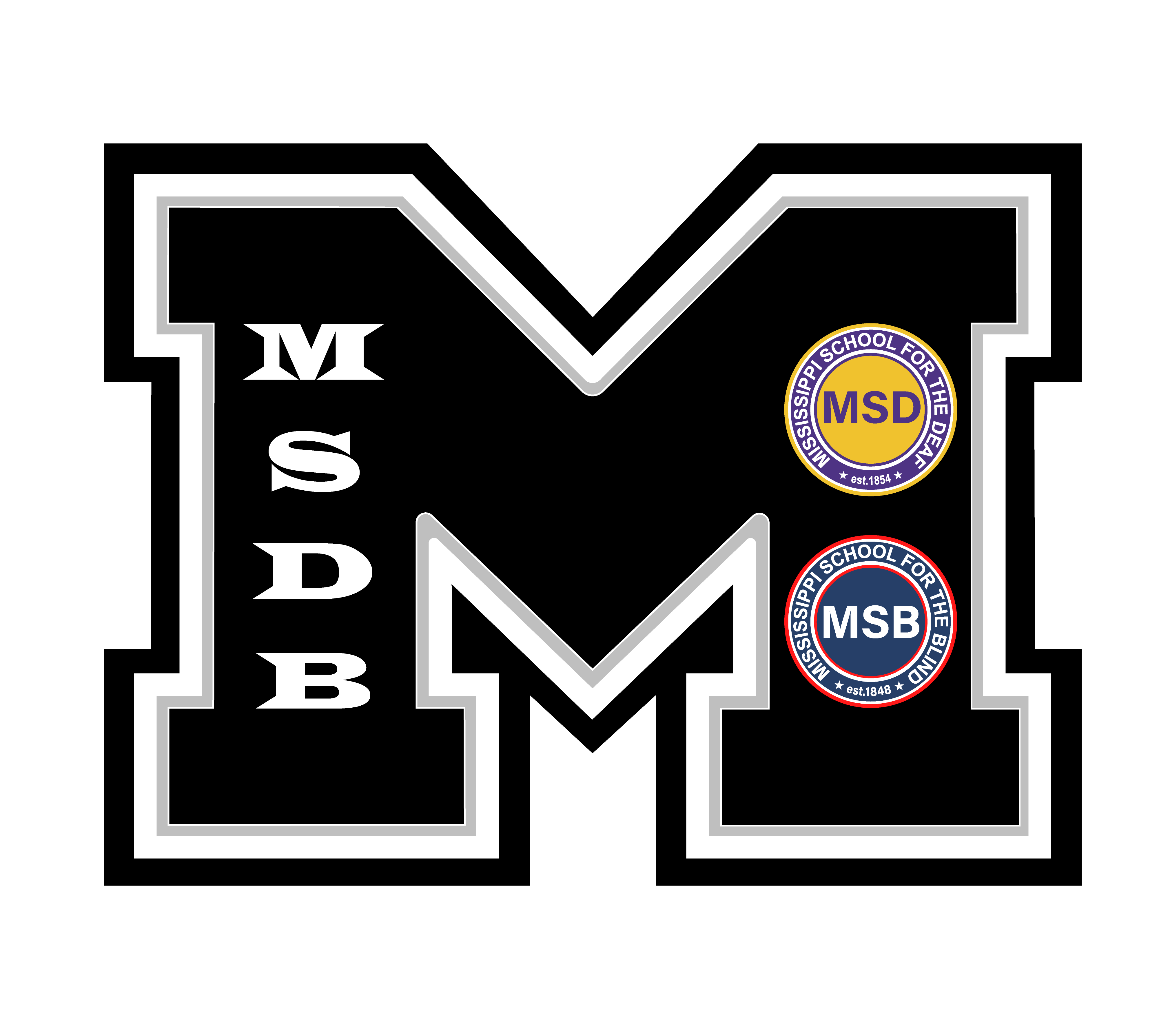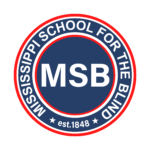History
The Mission of the Mississippi School for the Blind is to promote a strong foundation for learning and independence by providing specialized adapted services and materials to enhance maximum potential for students with visual impairments or blindness. Mississippi School for the Blind is a fully accredited elementary and secondary program (PreK-12) designed to focus on the unique learning needs of children and youth with visual impairments or blindness, including those with additional disabilities. Every student receives instruction and guidance from teachers and staff who have been specially trained to work with children and youth with visual impairments. Courses of study offered are comparable to those of any accredited public school. In addition, students receive instruction and services unique to those with visual impairments or blindness known as the Expanded Core Curriculum depending on their particular strengths and needs. This includes compensatory skills that help students access the state’s college and career readiness core curriculum, orientation and mobility skills, social skills, independent living skills, recreational skills, use of assistive technology, self-advocacy skills, and career education so they are adequately prepared for their college or career goals. In compliance with the Individuals with Disabilities Education Improvement Act (IDEA) and state regulations, all students must be determined eligible for services through the special educational process. An Individualized Education Program (IEP) is developed for each student, and the plan is reviewed and revised at least annually.
Over one hundred seventy years ago on March 2, 1848, the Institution for the Instruction of the Blind was officially established by the State Legislature (Article 9, Chapter 43 – Laws of Mississippi) with an appropriation of $2500. Prior to this, a blind philanthropist, James Champlain, made an appeal to the legislature to use state aid to establish an institution for the blind. Since its establishment, the school has been known by several names: Institute for the Blind, Asylum for the Blind, and Mississippi School for the Blind.
The school initially served 28 students; presently it provides services to visually impaired and blind children throughout the State of Mississippi through its Early Intervention Program, on-campus PK-12 educational program, the Mississippi Assistive Center Jackson Central Lions Low Vision Clinic, and the Mississippi Instructional Resource Center.
Mississippi School for the Blind has occupied several locations during its long history, at one time moved to Monticello in south Mississippi to allow its facilities to be used as a hospital during the Civil War. A school for black children with visual impairments was established in 1929 at Piney Woods Country Life School, where Martha Louise Morrow Foxx, a graduate of Overbrook School for the Blind, became its first teacher and later principal. Helen Keller visited this school, as well as the school on North State Street, in 1945. In 1951, a new school on Capers Avenue replaced the one at Piney Woods. In 1948, a new school for students at the North State location opened on Eastover Drive. All students moved to the Eastover site in 1980. In December 1999, MSB moved to its present location on the south side of Eastover Drive with the Mississippi School for the Deaf.
Mission Statement
The Mission of the Mississippi School for the Blind is to establish a strong foundation for learning and independence by providing individualized adaptive services and materials to enhance maximum potential for students with visual impairments or blindness.
Belief Statements
-
- Learning is the chief priority for students and the primary focus for decision-making.
- Students with visual impairments or blindness learn in different ways and will be provided with a variety of instructional strategies.
- Educators should be knowledgeable about the educational needs of individual students. Students with visual impairments or blindness learn best when they are actively involved throughout the learning process.
- Students with visual impairments or blindness should receive services from highly qualified professionals.
- Positive relationships and mutual respect among and between students and staff should be present.
- A commitment to continuous improvement is imperative for preparing students to be lifelong learners.
- The expanded core curriculum should be a part of the course of study for all students with visual impairments or blindness.
- Students receiving instruction in Braille should receive services from a TVI certified teacher with expertise in delivering braille instruction.

